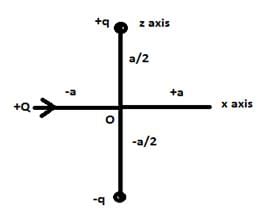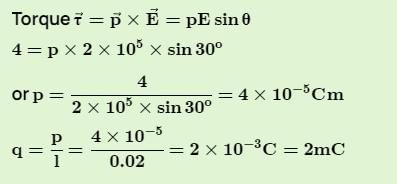Test: Electric Dipole - JEE MCQ
10 Questions MCQ Test Physics for JEE Main & Advanced - Test: Electric Dipole
Which of the following molecule has permanent dipole moment?
A dipole is said to be in stable equilibrium when angle between electric field and dipole moment is:
What is the angle between the electric dipole moment and the electric field on the equatorial line of the dipole?
How does electric field strength change with distance from a short dipole?
An electric dipole consists of a positive and negative charge of 4 µC. Each placed at a distance of 5 mm. The dipole moment for the system is
For forming an electric dipole between two point charges separated by a small distance, the two point charges are of
Positive and negative point charges of equal magnitude are kept at locations ( 0,0,a/2) and (0,0,-a/2) respectively. The work done by the electric field when another positive point charge is moved from (-a,0,0) to (0,a,0) is
An electric dipole is placed at an angle of 30° with an electric field intensity 2 × 105 N/C. It experiences a torque equal to 4 N m. The charge on the dipole, if the dipole length is 2 cm, is
|
297 videos|948 docs|172 tests
|


















